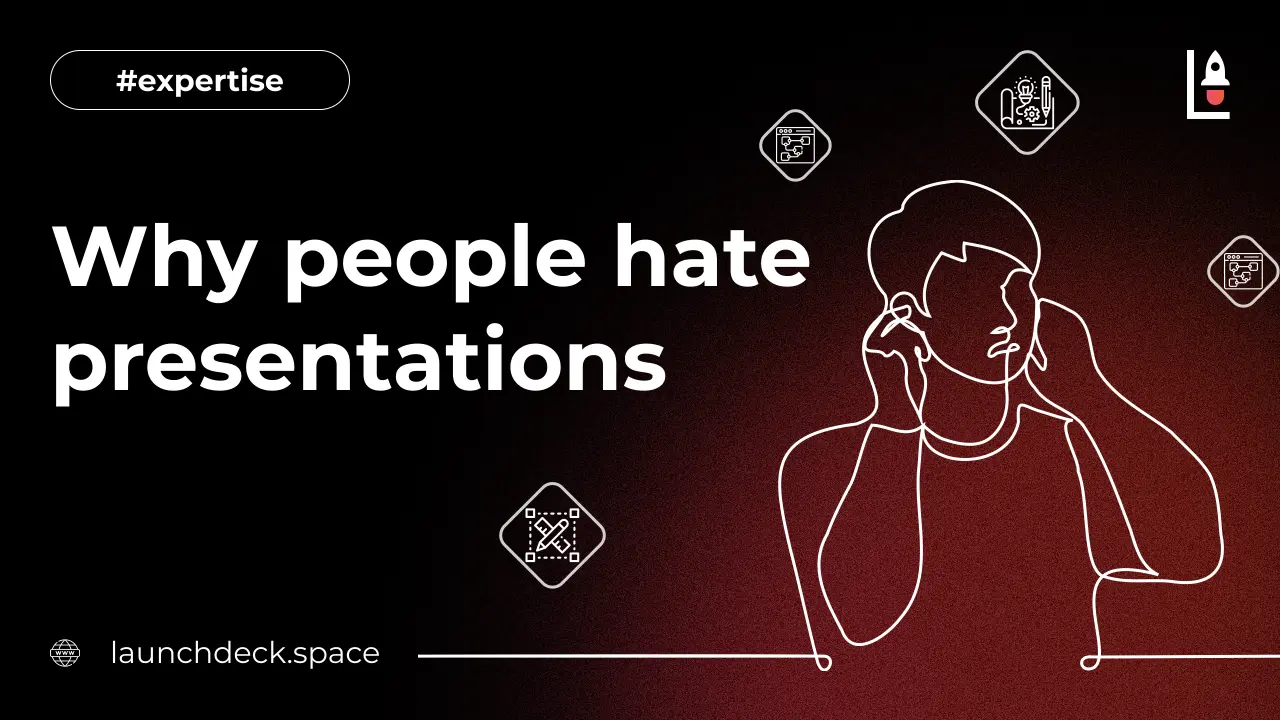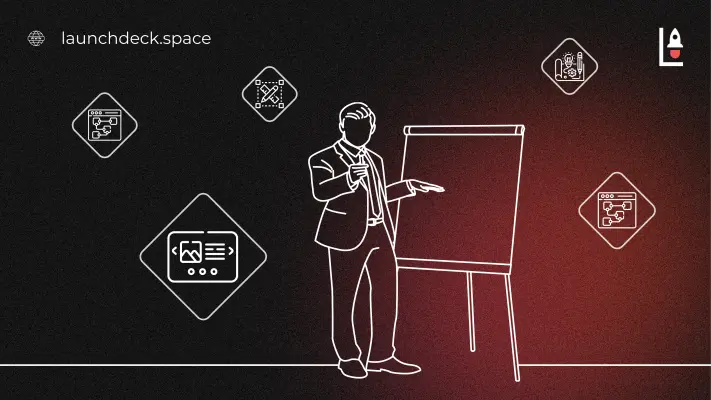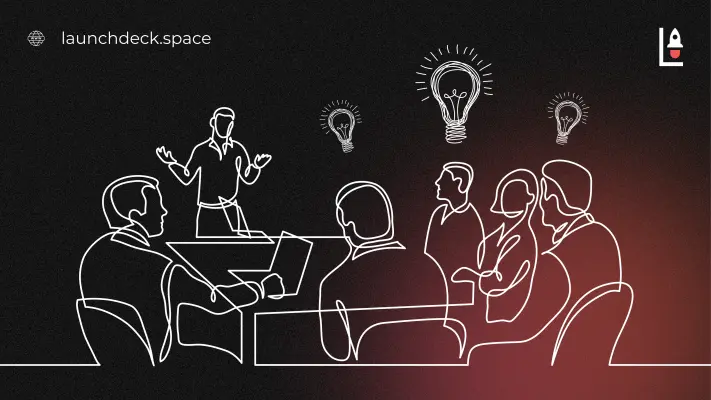

Why people hate presentations
The world of business is a competitive one, and the ability to convey ideas clearly and effectively is an essential skill for anyone who wants to succeed. Presentations are one of the most common ways for business professionals to share their ideas with others, whether it’s to pitch a new product to potential investors or to engage with partners and clients. However, despite their prevalence, there is a growing debate about whether presentations are an outdated way of communicating, with some even suggesting they should be banned altogether.
Launch Deck team is confident that a good presentation can make all the difference in getting your message across and leaving a lasting impression on your audience. In this article, we’ll tackle the common issues that speakers face and provide you with valuable tips on how to enhance your content, design, and pitch to keep your audience hooked all the way.


Common Challenges That Speakers Face
Presenting can be a daunting experience for many people, even those who are experienced business professionals. One of the most challenging aspects of presenting is figuring out how to present all the content you have in a way that engages your audience. This can be particularly overwhelming if you have a lot of material to cover, whether it’s a technology overview, a startup idea, or a product launch.
Another common issue that speakers face is capturing and keeping the attention of their audience. Getting people to focus on your presentation and engage with your ideas is a difficult task, and many speakers struggle with this.
The biggest fear for many speakers is the actual process of speaking in front of a live audience. Public speaking is a skill that takes time and practice to develop, and many people find it extremely challenging.
It’s worth noting that these challenges can result in inconvenience for both the speaker and the audience, as effective communication is a two-way street.
Let’s explore the three aspects of presentations that, in our experience, the audience dislikes the most:
- Poor design
- Too much content
- Delivery
Poor Design: Design is an integral part of any presentation, and poor design can quickly turn off your audience. Presenters must ensure that their slides are visually appealing, easy to read, and well-organized. Unfortunately, many presenters often overload their slides with text, making it difficult for the audience to follow along. They also use too many colors, fonts, and unnecessary infographics, making the presentation look cluttered and overwhelming. Presenters should stick to the brand guidelines and design styles that their company uses, ensuring consistency across all slides. A poorly designed presentation can significantly impact the audience’s perception of the speaker’s credibility and message.
Overloading the Content: Another common mistake that presenters make is overloading their presentations with too many slides. They may think that more slides mean more information, but this can cause the audience to lose focus quickly. Presenters should concentrate on quality rather than quantity and keep their slides concise, informative, and engaging. Additionally, using too many infographics, graphs, and charts that do not relate to the presentation’s core message can confuse the audience and distract them from the presentation’s key points.
Delivery Issues: Even if the presentation has good design and well-curated content, the delivery can significantly impact how the audience perceives it. Speakers who read from their slides can make the audience feel like they are just going through the motions and not fully invested in the presentation. One common issue we often encounter is a mismatch in language/terminology between the speaker and the audience. For instance, as a startup owner in a technical field, you may be intimately familiar with all aspects of your product. However, speaking in a technical language or using complex terminology can be a barrier to effectively connecting with your audience. This disconnect can lead to a breakdown in the flow of the presentation and ultimately hinder the overall impact of the message.


From Good to Great: Essential Tips for Speakers
Despite the challenges, there are several things speakers can do to make their presentations more effective. Firstly, it’s essential to have a clear and concise message. Rather than trying to cover too much material, focus on the key points that you want your audience to take away from your presentation. Keep it simple, and avoid overwhelming your audience with too much information.
Remember, a well-designed presentation is not only visually appealing but also easy to follow and understand. You can create a professional-looking presentation that engages your audience and effectively delivers your message by using the following tips:
Stick to your brand guidelines: Every business has its own brand guidelines and design style that serve a certain purpose. Make sure to follow these guidelines and use consistent design elements throughout your presentation. Using several templates from different design styles can make your presentation look cluttered and unprofessional.
Less is more: Avoid overwhelming your slides with too much text or infographics. A common mistake is creating presentations that are too long, which can bore your audience quickly. Focus on creating one idea per slide, and use visual aids to reinforce your message. Keep your presentation concise and to the point.
To do so, you can start and finish your speech with an executive summary.
Use visual aids effectively: While infographics, graphs, and charts can be useful, they should only be used when necessary. Overloading your presentation with too many visual aids can make it difficult for your audience to follow along. Use visual aids sparingly and make sure they enhance your presentation rather than distract from it.
Another useful tip is to practice your presentation several times before delivering it live. Prepare your storyline in advance and practice it several times in order to find the best delivery style that fits for you in a comfortable pace for your audience.
Finally, avoid using technical terms and jargon that may not be familiar to them. This will help your audience to feel involved and invested in your presentation.
In conclusion, while Jeff Bezos may have proclaimed that presentations should be banned from Amazon, they are still a crucial part of communicating ideas and information in many aspects of business and life. As such, it is important to understand the struggles that both speakers and audiences face in order to improve the overall presentation experience.
Check out our YouTube channel where we provide valuable tips and tricks for creating effective and engaging presentations. Whether you are a seasoned presenter or just starting out, we are confident that our content will help you to take your presentation skills to the next level.




